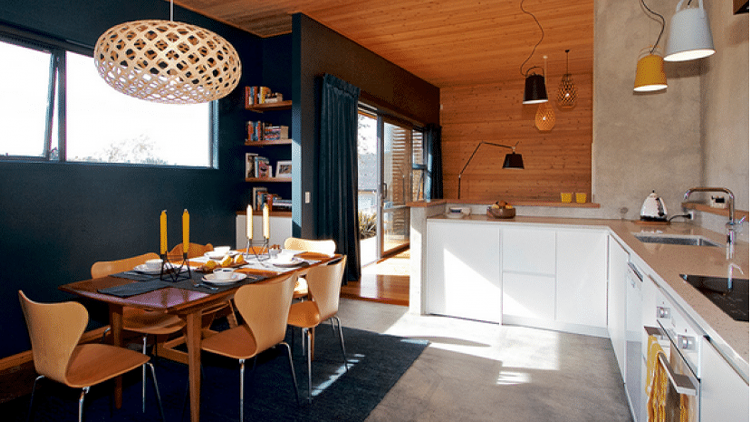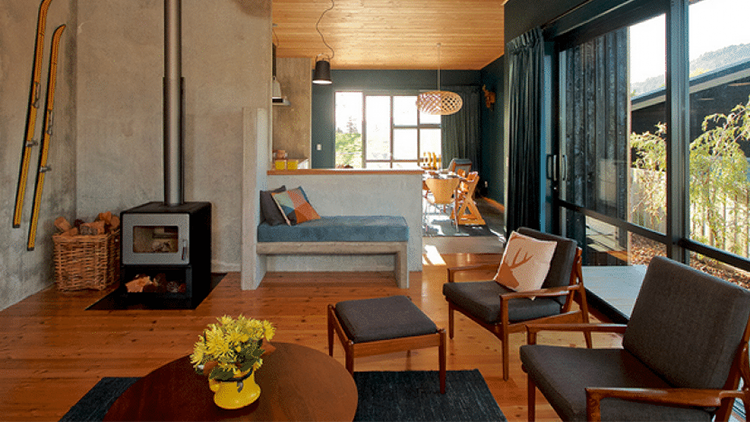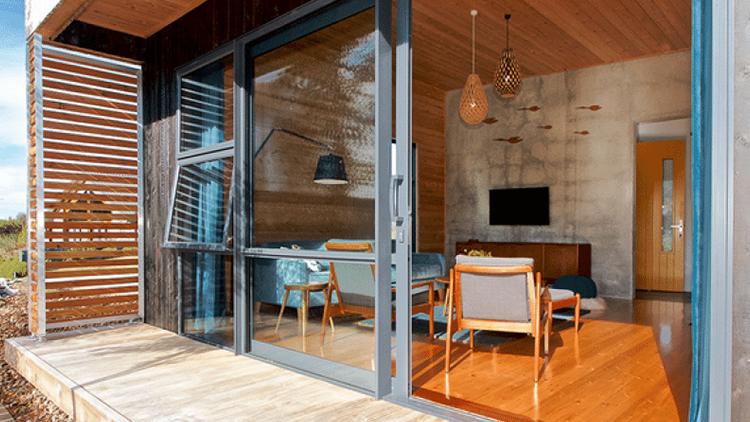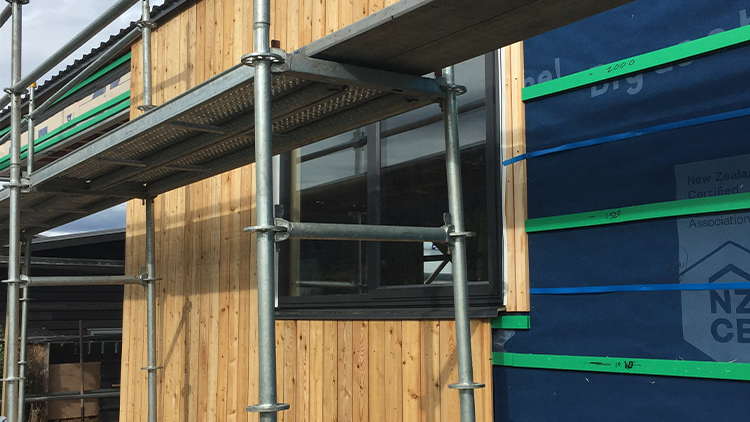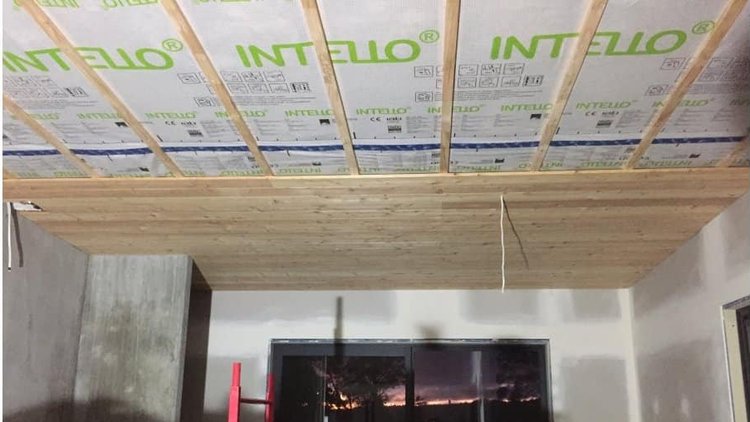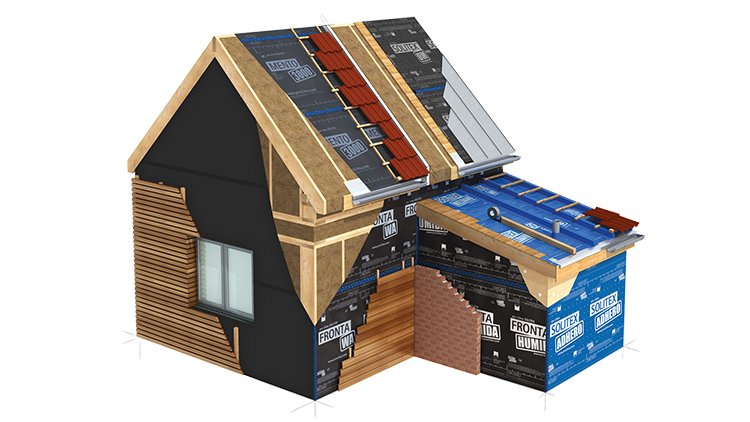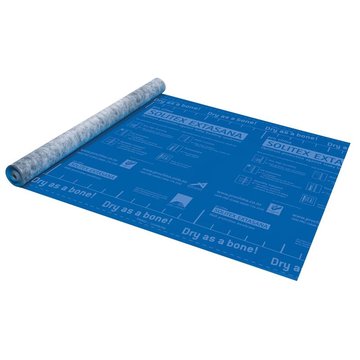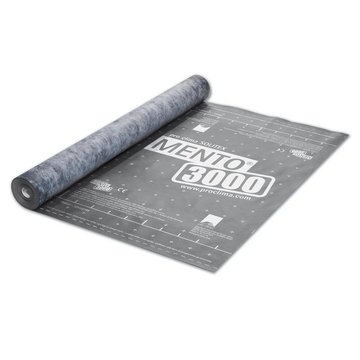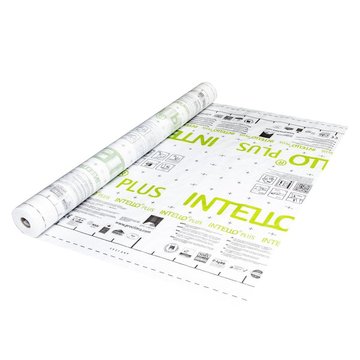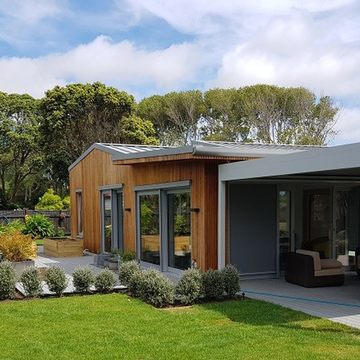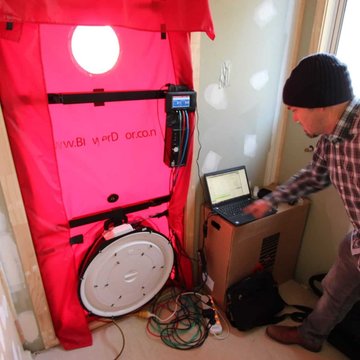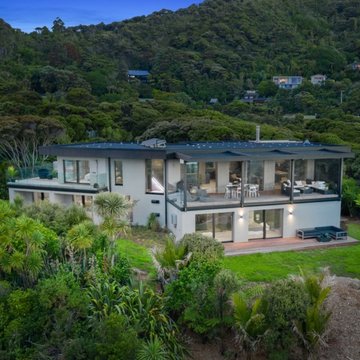Europe

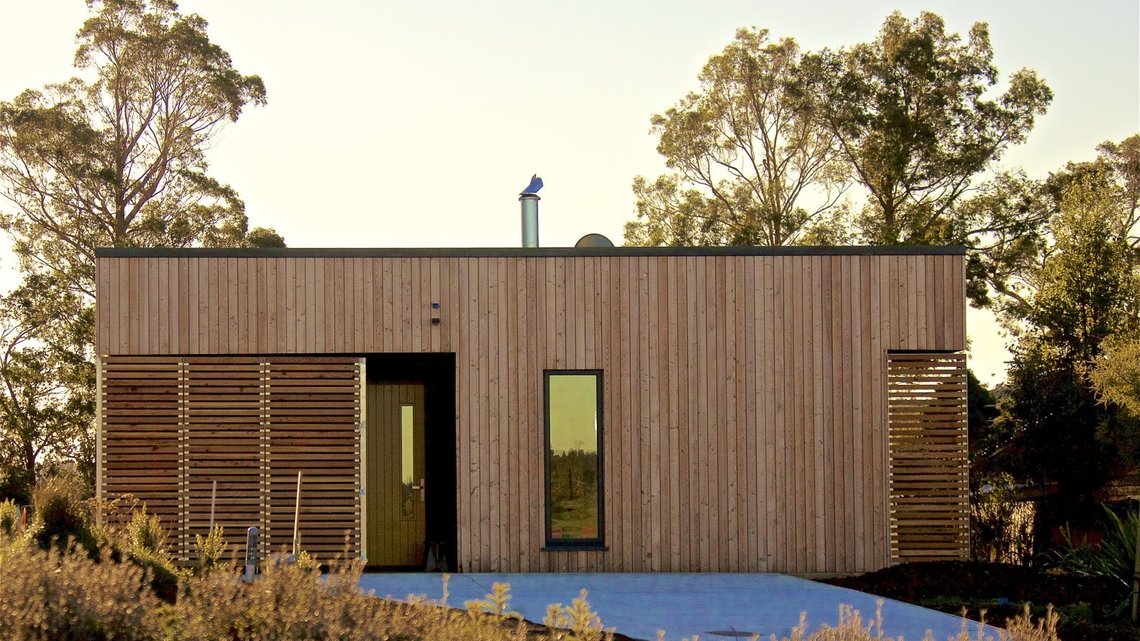
Kowhai
Cabin
Keeps
Warm
in
Winter,
Cool
in
Summer
Can heat be retained and slowly released by optimising orientation and materials — including the pro clima INTELLO® Intelligent Air Barrier?
This uncomplicated wooden cabin, with its raw form and finishes, sits effortlessly in its natural surroundings. It protects the occupants from the elements and hides a surprisingly warm interior. The holiday cabin is built as a hideout for summer and winter while enjoying the outdoors.
How was this project implemented?
The cabin has been built as an experiment: to find out if heat can be retained and then slowly released by optimising orientation, materials, insulation, applying the pro clima INTELLO® Intelligent Air Barrier and only heated by a wood fire. The concrete spine creates an effective thermal mass. The excess heat from the wetback fireplace can be pumped into the pipes in the concrete to store the heat and slowly release it over time. The cabin is designed to get as much sun in as possible (to heat the concrete) in winter and keep the wind out in summer, while still opening up to the outdoors.
Untreated Siberian larch cladding is combined with charred larch in feature areas, cutting into the main volume. Bi-fold screens corner off the entry area when the house is unoccupied, but can be transformed into a lockable storage area or a carport.
On entering the cabin the framed views direct the attention to the outdoors, the mountain on one side, sky, trees and open fields on other sides. The simple rectangular floor plan divides the cabin into private and social areas, with the concrete walls as a spine through the centre. These walls help to keep the house at a constant temperature throughout the year. In the centre of the cabin are the kitchen, pantry and dry room, everything else folds around this centre.
The cabin seems to be a non-stop dialogue between interior and exterior, it wants to be open and (en)closed, warm and cool at the same time. The striking yellow and black entrance draws visitors in and reveals a glimpse of the warm interior. The interior is a mix of different textures and colours designed to bring a sense of warmth in winter and cool in summer: dark and light blue with pops of yellow, rough concrete walls with smooth velvet fabric, and warm timber with cool concrete floors.
The direction of the larch sarking in the lounge draws the eye straight to the mountain. The lines of timber continue to the outside, with timber soffits and decks to support the indoor/outdoor flow. Throughout the house, traces of (Dutch) heritage are found, but also ancient Japanese techniques (Shou-sugi-ban, the charring of timber), re-used 100-year-old rimu, and re-purposed furniture.
The main goal was to design a warm cabin to come home to in winter and a cool retreat in summer that connects to the elements all year round.
And indeed, it has been achieved.
-
Designer - Maurice Regeer, MnM Design
-
Photographer - Glyn Hubbard
Airtightness Systems
Vapour check and airtight membranes with humidity-variable diffusion resistance provide the best protection against moisture and mould-infested components. In combination with moisture-active wind-sealing membranes on the exterior, they significantly improve the protection of building components and facilitate a healthier, mould-free indoor environment.
Weathertightness Systems
The SOLITEX wind-sealing system makes building structures particularly energy-efficient and provides effective protection against damage to structures. These high-performance functional membranes are extremely open to diffusion, provide maximum watertightness against driving rain, and actively transport moisture to the outside.
Ideally, they should be combined with humidity-variable airtightness systems on the interior side of the insulation.
